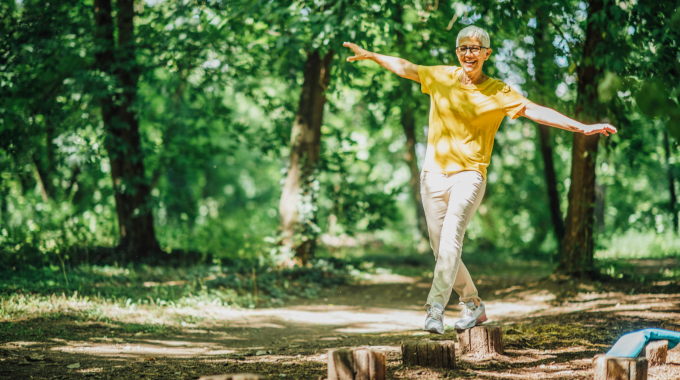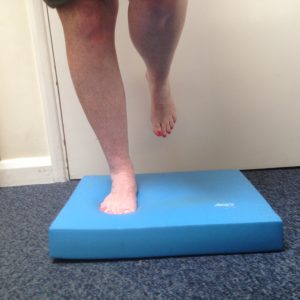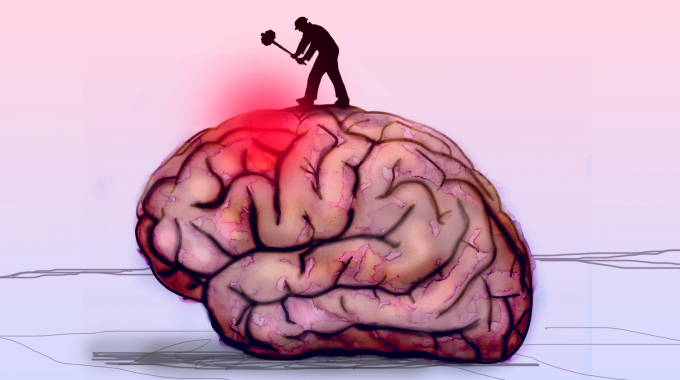Migraines and Chiropractic Migraine Awareness Week 22-28 September - I see many patients in clinic…

Why is Balance Important?
Why is balance important? Balance is an important part of being able to feel and stay healthy. If we feel unsteady it can prevent us from undertaking certain activities including moving our bodies and exercising. If we limit our movement due to balance issues this can lead to worsening of symptoms. It is really important to find some safe ways to improve your balance.
There are several reasons our balance can be upset:
- As we age our vestibular system can slow down
- Infections around our sinuses and ears can affect our vestibular system
- Alcohol and drug consumption
- Post injury – our proprioception can be disrupted if we’ve had an injury to our:
- foot
- ankle
- neck
What creates balance?
Balance is achieved through several combined body systems working together. The most important being the vestibular system. The vestibular system is in your inner ear and helps determine motion, balance, and orientation of the space around you.
Other parts of your body that are involved in maintaining balance are your eyes and nervous system. Your eyes for vision and your nervous system helps sense touch on your skin and movement in your joints, muscles, and tendons (proprioception).
Proprioception is your body’s ability to know where it is in space at any time. It is your awareness of position and movement of your body. The part of the nervous system that manages your proprioception is neurons in your skin, muscles, tendons, and ligaments. These send information about where all the different parts of your body are in relation to each other and your external environment.
All of this works together for your brain to figure out whether you are static or mobile (think sea sickness). It determines when you are upright and where you are in space, so you don’t bump into or trip over obstacles.
Imagine if you have injured yourself – an ankle sprain for example. That part of your body would send messages to your brain. When it is injured, the messages can be affected which can then increase your risk of injuring your ankle again.
Simple balance exercises to do at home
If you are struggling with balance, however mildly, there are exercises you can do to fire up your system. This will help you to get your balance and get yourself back on track.
All exercises for balance should be done in a safe environment. You should be able to hold onto something and there should be no risk of falling and injuring yourself.
Standing on an uneven surface
This can be done by simply standing on a cushion or pillow on the floor. As mentioned above, please do this in a safe environment. Place your cushion close to a wall so you can steady yourself if needed.
Firstly, you can simply stand with two feet on the cushion. If two feet on the cushion feels very easy for you there are several progressions you can do:
- Stand on both feet and close your eyes
- Stand on one leg (make sure you alternate between both feet)
- eyes open
- eyes closed
- Set out a row of cushions and walk over them
- eyes open
- eyes closed


Tightrope walking (heel to toe walk)
Don’t worry you don’t need to do this on an actual tightrope! This exercise follows the same principle as a tightrope, but you’re going to do it on a flat stable surface. If you have tiles on the floor, you can simply walk along one of these. If not, you can place a long flat piece of material (such as a scarf) and walk along it. Your heels should be directly in front of your toes.
One legged stand
We already mentioned that you can progress from standing on an uneven surface to doing it on one leg. You can also practice just balancing on one leg at any time. Good times to do this are while you are brushing your teeth or waiting for the kettle to boil.
Basically, anytime you are standing still for a period of time and have something to hold onto if necessary. Practicing the one-legged stand while you are completing another task will intensify the workout your balance gets. It also simulates regular daily activity such as walking while carrying something.
Walking whilst turning your head
This exercise is a bit more advanced. If you feel very unsteady, work on the other exercises first to build up your ability and confidence. You can do this activity with someone else alongside you for safety. Alternatively, if you have a narrow corridor where you can reach out and touch both walls simultaneously, that will also work well.
The idea here is that you find a safe, flat distance of space that you can walk along. There should be no obstacles and the above mentioned safety measures should be in place.
Walking normally in a forward direction, slowly turn your head in all directions as you continue to walk. This will activate your vestibular system and gets it working. Think of it like any other exercise where you would work a muscle to get it stronger.
The directions you want to turn your head are:
- look down to the floor
- look up to the sky
- turn your head only to the left
- turn your head only to the right
Always come back to your forward-facing position between each move. Give yourself time to re-orientate before performing the next position. You don’t need to stay in any of the positions for a length of time. Simply turn your head to the left and then turn straight back to the front. Do all the movements in a slow controlled manner to give your system time to adjust.
I hope you’ve found some interesting information in this blog. If you would like some more personalised advice, you can contact me here.




Comments (0)